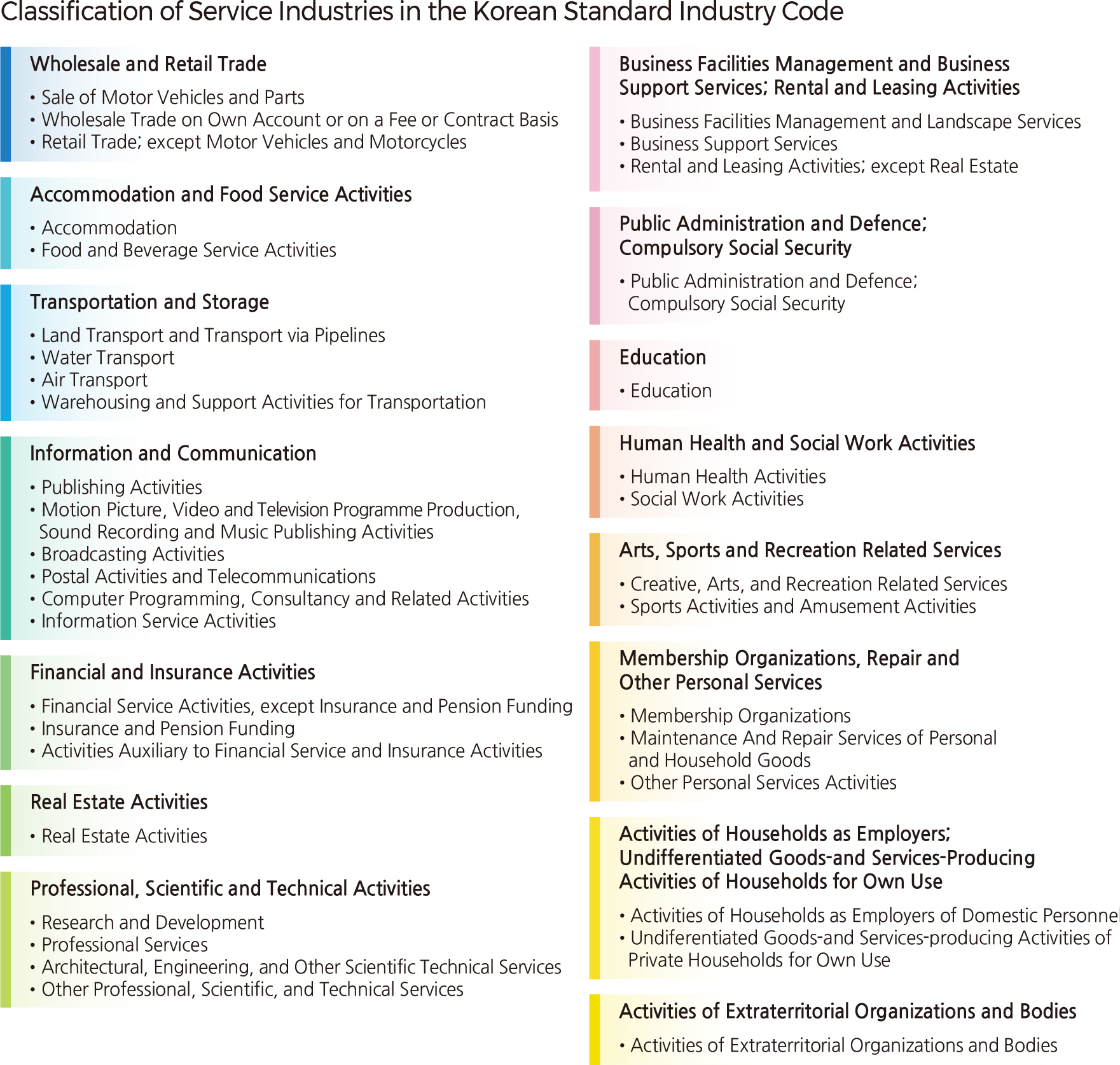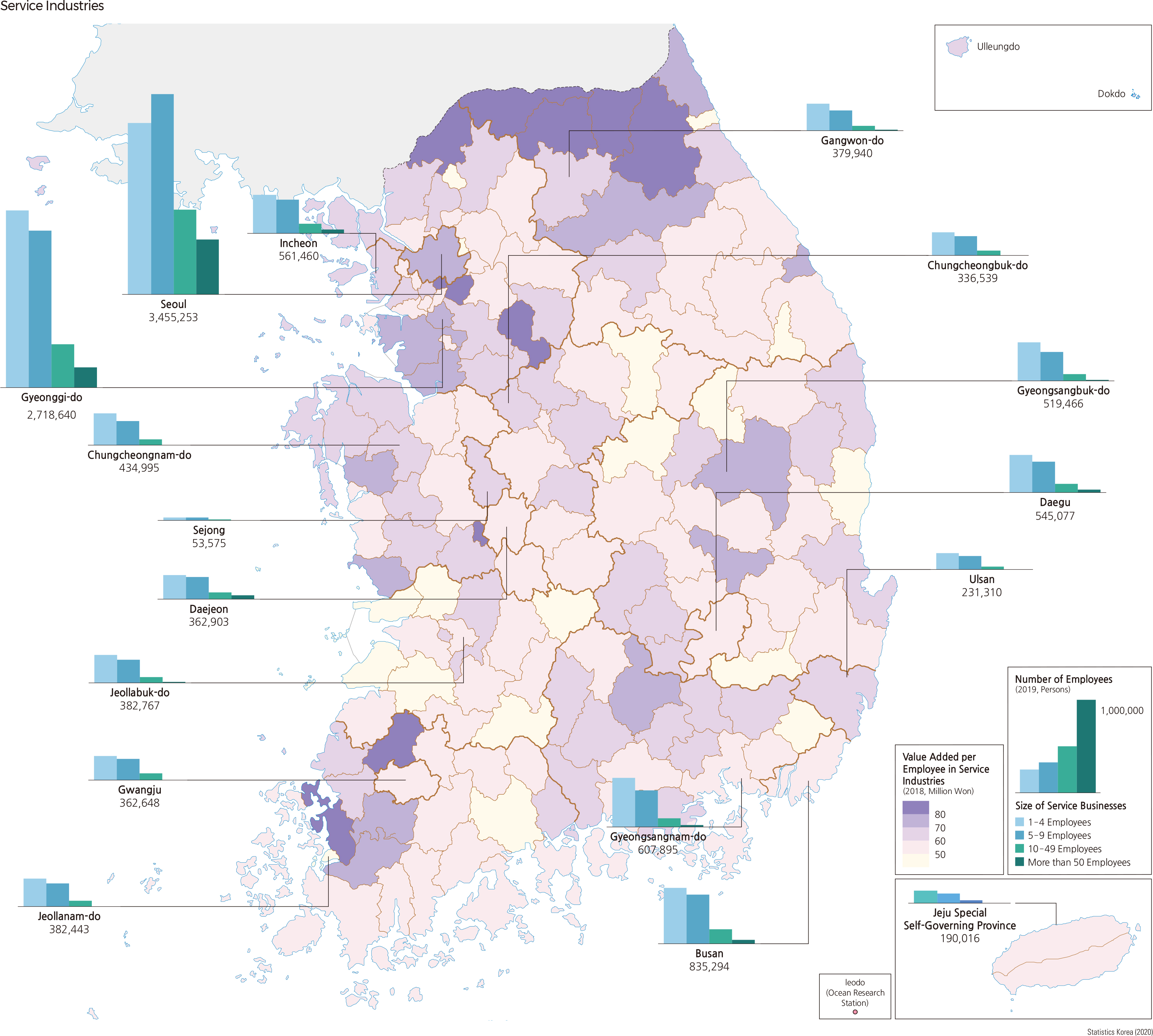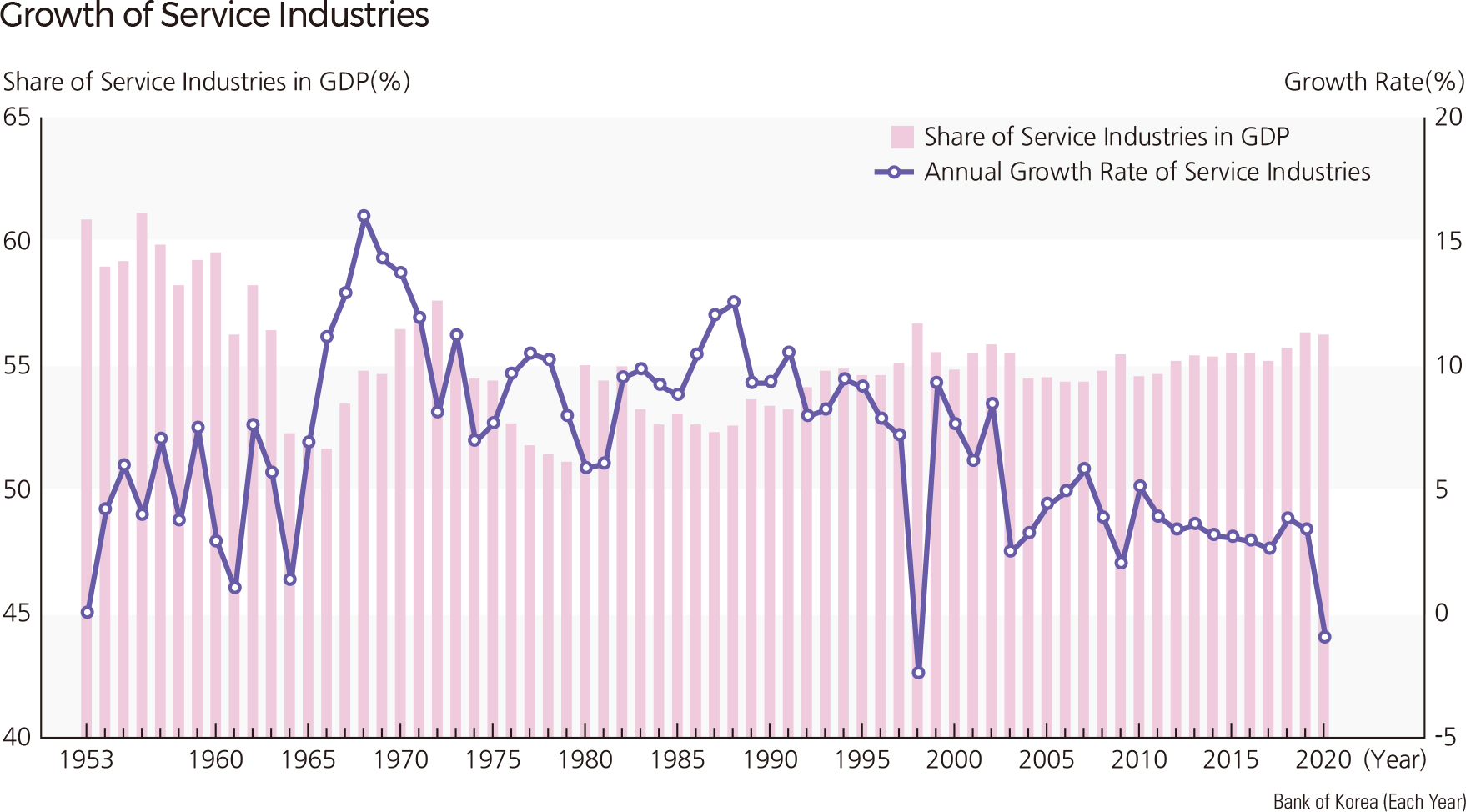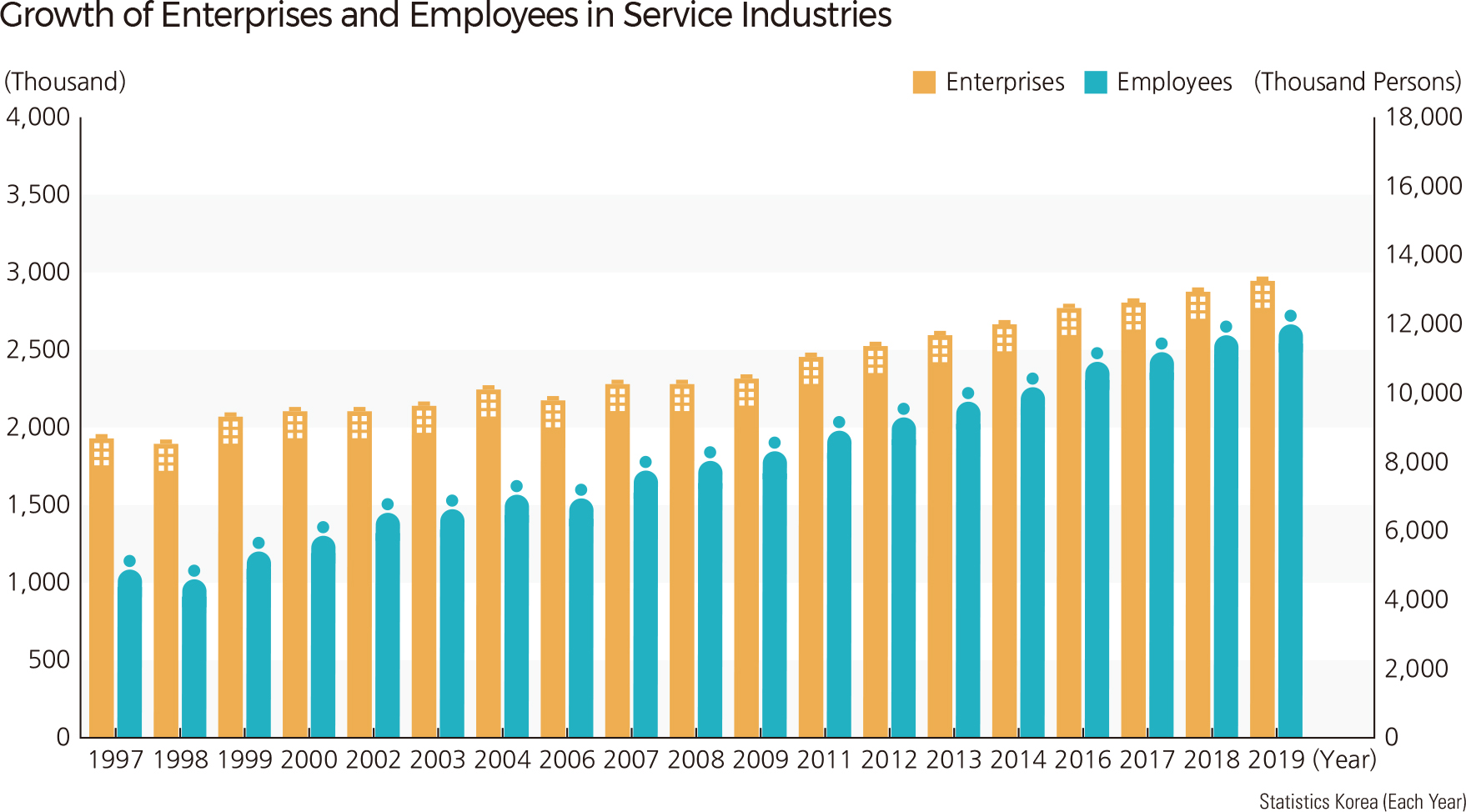English III 2021
Since the 1960s, the Korean industrial structure has changed from traditional agricultural, forestry-, and livestock-based primary industries to manufacturing-based secondary industries led by the government’s manufacturing promotion policies. But manufacturing reached its peak in the 1990s. Currently, service industries are growing continuously and have become the main foundation of the Korean economy. Service industries provide non-material products, including commerce, food and lodging, tourism, transportation, communication, finance, real estate, medical care, and so forth. Unlike manufacturing, the final products of service industries are non-material—they cannot be stored and have to be consumed immediately. Consequently, production and consumption in service industries cannot be separated by time and space and have to be integrated, i.e., the time and place of production and consumption are the same. However, with the recent developments in communication technology and the changes in how society regards copyrights, the previous limitation of time and space has, to a certain extent, been removed for some service industry products. The spectrum of service industries is almost limitless as it includes all types of economic activities that satisfy human desires apart from material goods. The activities are diverse and vary from simple labor to complex knowledge dissemination and from satisfying individual needs to assisting with various other production activities. Moreover, as the scale of the economy enlarges and the standard of living improves, the demand for certain service sectors becomes more diverse and rapidly changing. As a result, the categories of service industries have expanded, and the activities have become more complex. Producer services, those services assisting a business in conducting its operations, have gained more attention in recent years and have played important roles as they produce new jobs by counterbalancing the job losses caused partly by the factory automation in the manufacturing sector. Producer services are also important because they provide high technology jobs and vitalize other industrial activities. Such vast and complex industrial service categories can be classified in a myriad of ways. They include service industries that handle the distribution of already produced goods such as retailing and wholesaling; transportation and communication; and finance, insurance, and real estate that manages wealth and finance. Service industries were also extended to include other personal services that satisfy individual service activities, business services that help other producer services, and public services that help individuals and the public participate in economic activities. The more common classification of service industries is the division by groups that demand services (i.e., consumer services and business services). The categories of consumer services include retail, lodging, leisure and tourism industries, personal services, and public services. Producer services include transportation, warehousing, financing, insurance, real estate, research and development, and advertising. According to the KSIC (Korean Standard Industry Code) classification by the Bureau of Statistics, the service industries of Korea can be divided into 15 classifications: wholesale and retail trade / transportation and storage / accommodation and food service activities / information and communication / financial and insurance activities / professional, scientific and technical activities / business facilities management and business support services / public administration and defense / education / human health and social work activities / arts, sports, and recreation-related services / membership organizations, repair and other personal services / activities of households as employers / activities of extraterritorial organizations and bodies.
Today the service industry is a dominant industry in Korea. Traditionally the Korean industrial structure was centered on primary industries. However, the manufacturing sector has accelerated since the 1960s when the government-led industrialization policy initiated the five-year economic plans. The rapidly growing manufacturing industry trend eventually peaked in the 1990s and started to slow down. On the other hand, service industries have continued to grow until today. In 2019, the number of service industry business establishments had reached about 3.6 million and accounted for 85.5% of the total number of industrial establishments. There were approximately 16.9 million service workers, which accounted for 74.2% of the total number of employees. The total sales for service industries were about 3.2 trillion US dollars, 60.0% of the total industrial sales. The service industry has continued its steady growth annually. When comparing service industry employment among the metropolitan cities and provinces, the number of service employees in Seoul was 4.58 million, or 27.2% of the total number of service employees. Gyeonggi-do had 3.64 million (21.6%), and Busan had 1.13 million (6.7%). About half of the service workers were concentrated in the Seoul Metropolitan Area (Seoul, Incheon, and Gyeonggi-do), which is similar to the geographic distribution of the population. The average number of employees per service establishment in 2019 was 4.72 persons, indicating that small businesses are dominating. In terms of the number of employees by the size of establishment, small businesses with fewer than 10 employees accounted for 45.0%, indicating that most service establishments are small- and medium-sized businesses.
|



